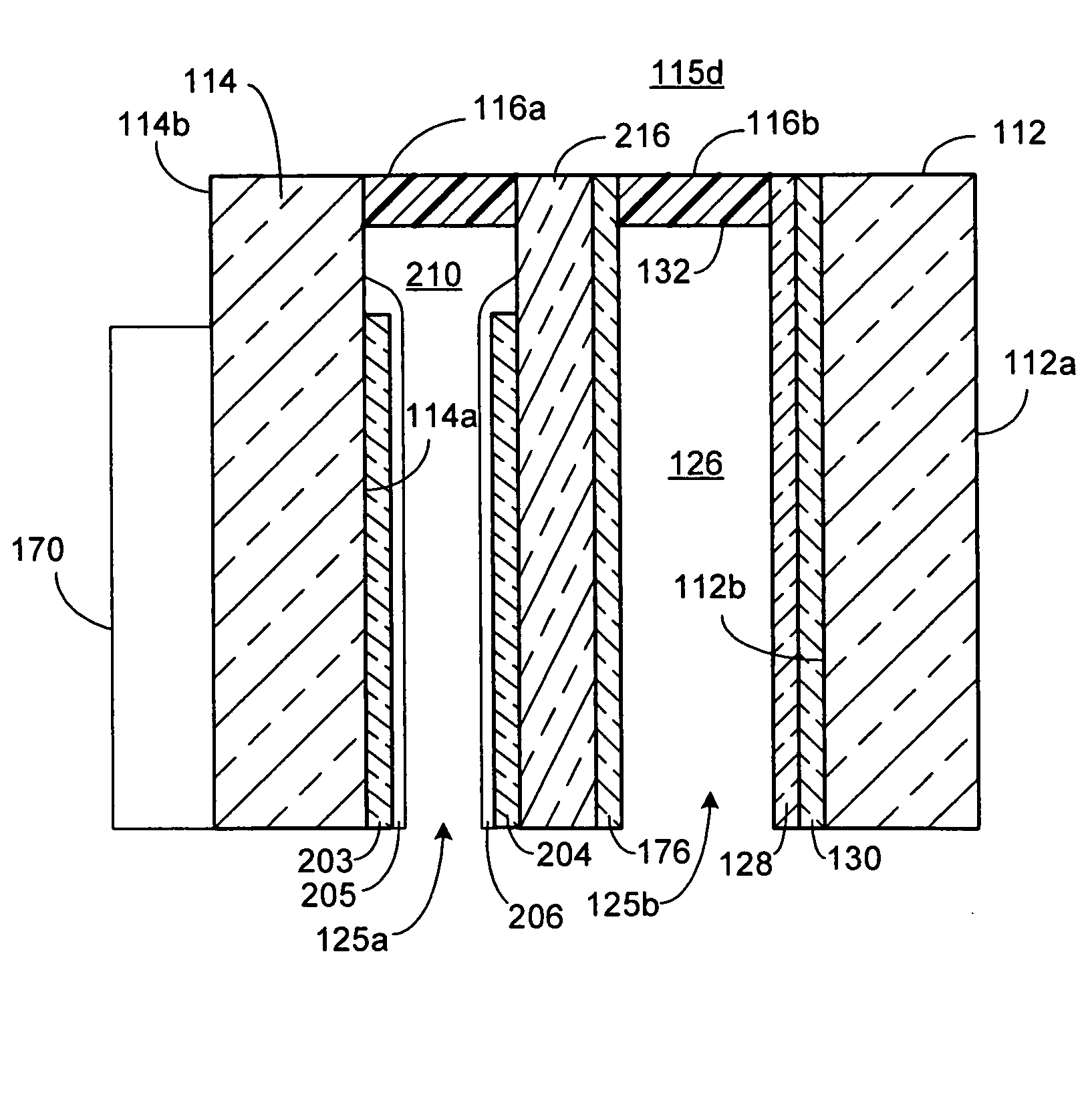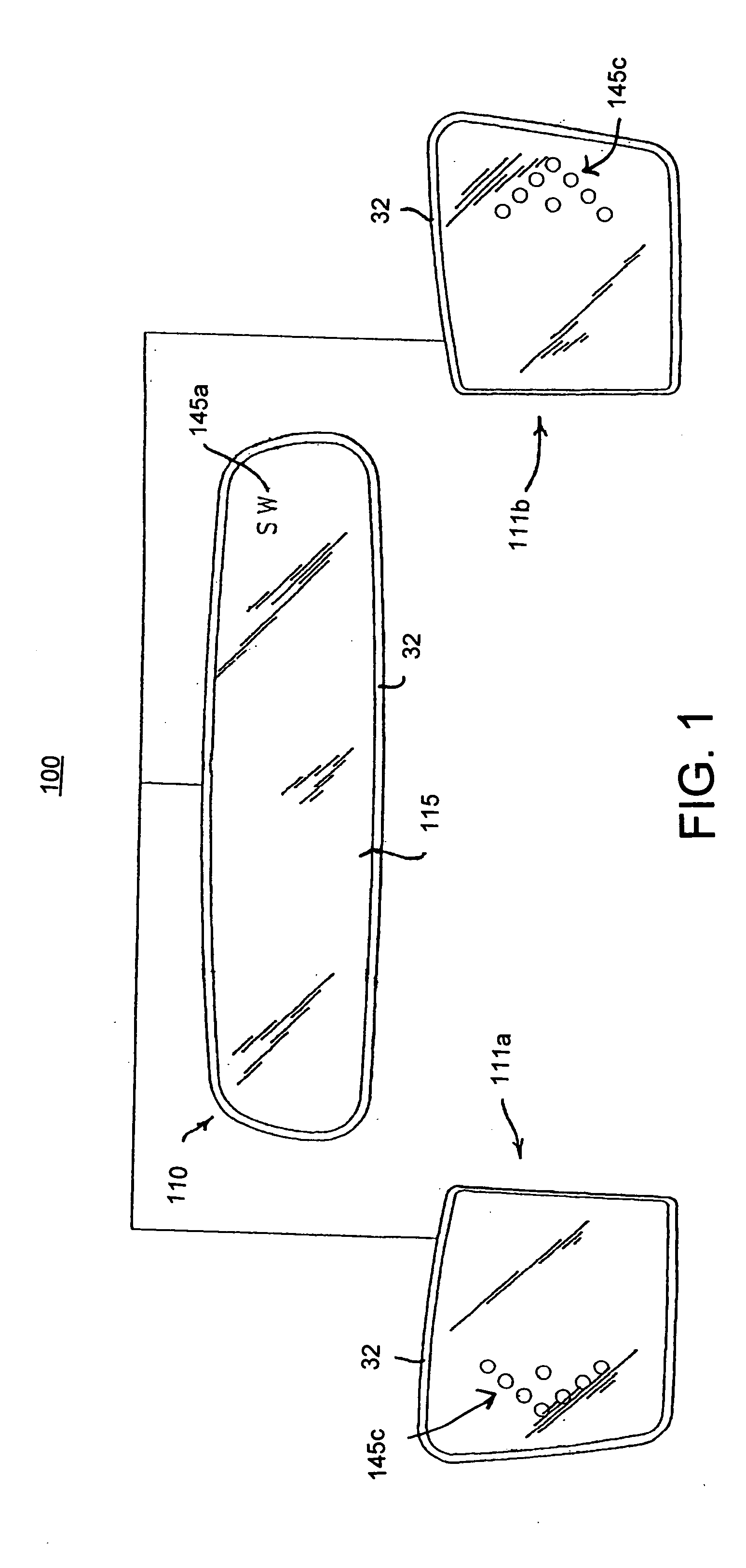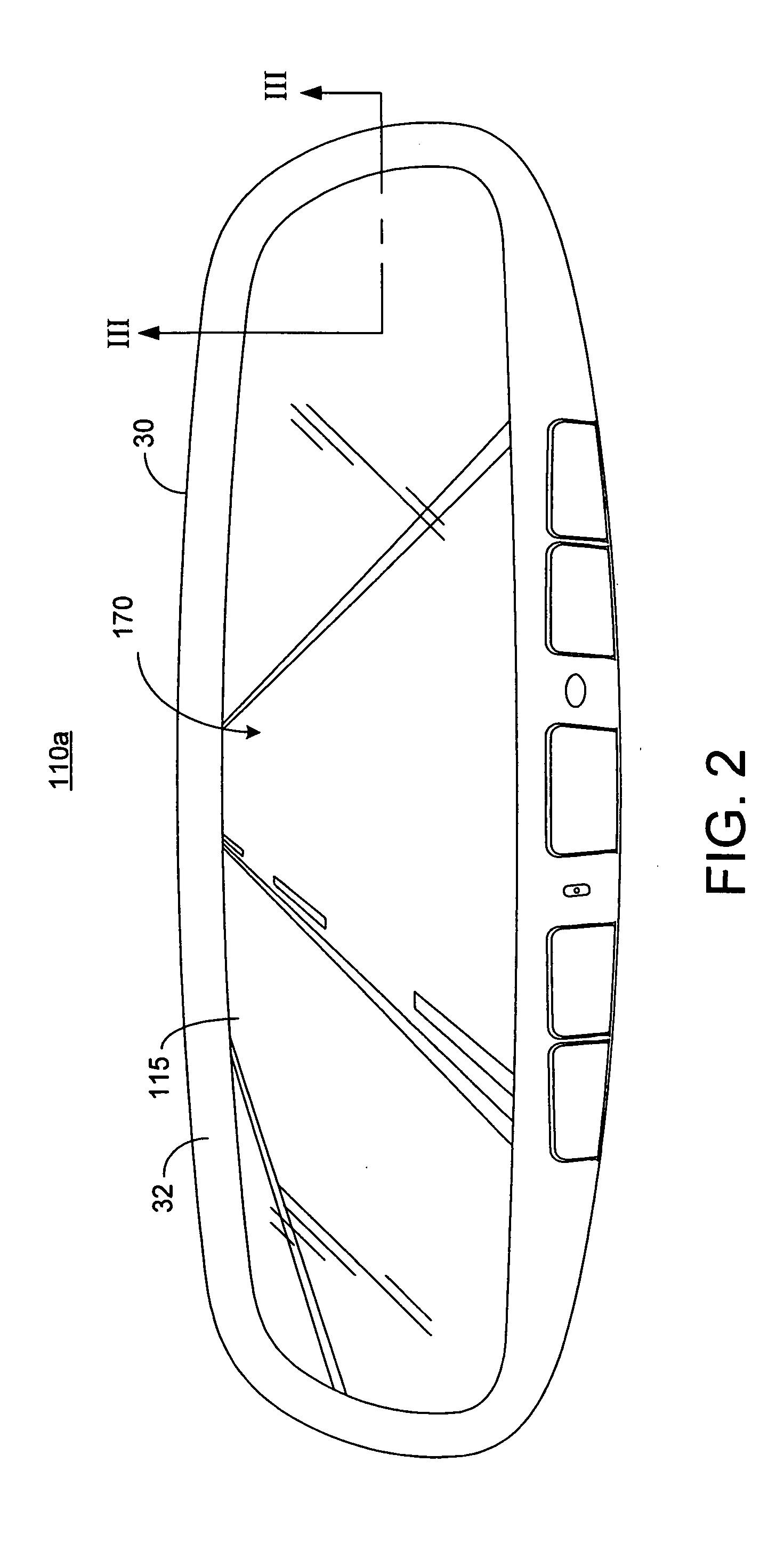Variable reflectance mirrors and windows
a mirror and variable reflectance technology, applied in mirrors, instruments, vehicle components, etc., can solve the problems of reducing the reflective viewing area of the mirror assembly, blocking more of the driver's view through the windshield, and window also providing further problems
- Summary
- Abstract
- Description
- Claims
- Application Information
AI Technical Summary
Benefits of technology
Problems solved by technology
Method used
Image
Examples
first embodiment
[0152]FIG. 15 shows a window 1000 constructed in accordance with the present invention. Window 1000 comprises a frame 1002, a first transparent substrate 1012, and a second transparent substrate 1014, which serve as the substrates for a cholesteric element 1020. Cholesteric element 1020 has first and second transparent electrodes 1023 and 1024 provided on respective substrates 1012 and 1014. In addition, cholesteric element 1020 includes orientation layers 1025 and 1026 provided on respective transparent electrodes 1023 and 1024 and a seal 1027. A mixture 1030 of of polymerizable, cholesteric liquid crystalline molecules are provided within chamber 1028. Further details of the construction of a suitable cholesteric element is disclosed in U.S. Pat. Nos. 5,762,823 and 5,798,057, the entire disclosures of which are incorporated herein by reference.
[0153]FIG. 16 shows a first embodiment of an insulated window 1100 constructed in accordance with the present invention. Insulated window 1...
second embodiment
[0154]FIG. 17 shows an insulated window 1100a constructed in accordance with the present invention. Insulated window 1100a is similar to insulated window 1100 except that a second cholesteric element 1020a is provided between panes 1112 and 1114. This provides the benefits discussed above. In this embodiment, the first and second cholesteric elements are adjacent one another and share substrate 1132.
third embodiment
[0155]FIG. 18 shows an insulated window 1100b constructed in accordance with the present invention. Insulated window 1100b is similar to insulated window 1100a except that the second cholesteric element 1020a is provided adjacent pane 1114 such that pane 1114 acts as one of the substrates for element 1020a. The insulated chamber 1035 is thus provided between cholesteric elements 1020 and 1020a. It will be appreciated that for some applications, it may be beneficial to replace the second cholesteric element 1020a with an electrochromic element to provide heat absorption and radiation during winter months.
[0156]FIG. 19 shows a vehicle window / sunroof 1200 comprising a cholesteric element 1020 and a shatterproof transparent substrate 1212, which may be made of polyvinylbutrate (PVB), or the like. Cholesteric element 1020 may be provided on either the inside or outside of substrate 1212.
PUM
 Login to View More
Login to View More Abstract
Description
Claims
Application Information
 Login to View More
Login to View More - R&D
- Intellectual Property
- Life Sciences
- Materials
- Tech Scout
- Unparalleled Data Quality
- Higher Quality Content
- 60% Fewer Hallucinations
Browse by: Latest US Patents, China's latest patents, Technical Efficacy Thesaurus, Application Domain, Technology Topic, Popular Technical Reports.
© 2025 PatSnap. All rights reserved.Legal|Privacy policy|Modern Slavery Act Transparency Statement|Sitemap|About US| Contact US: help@patsnap.com



